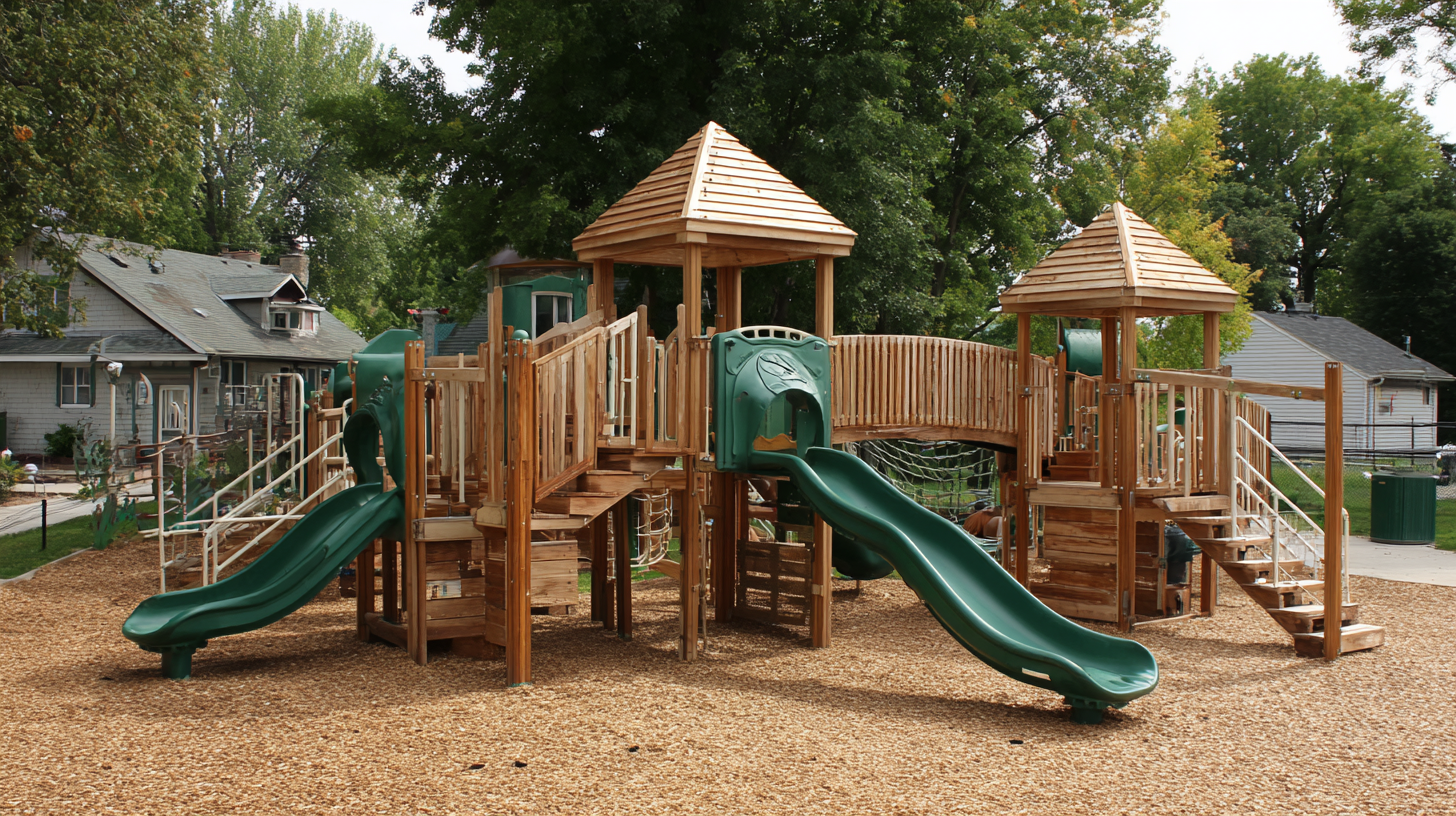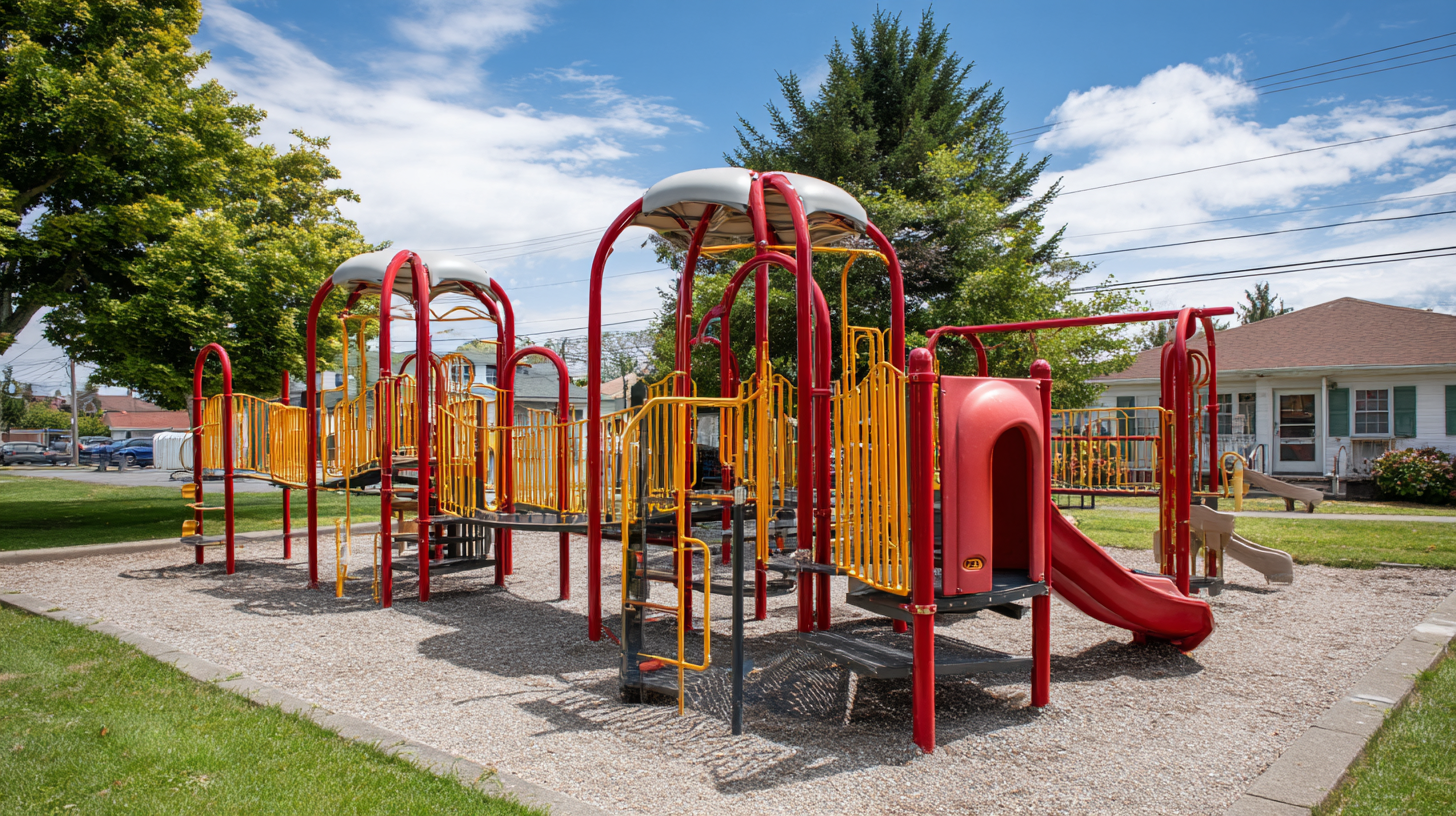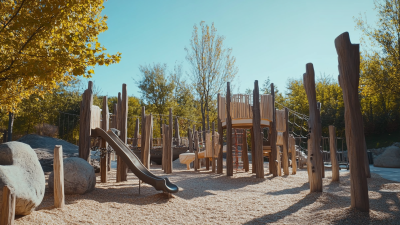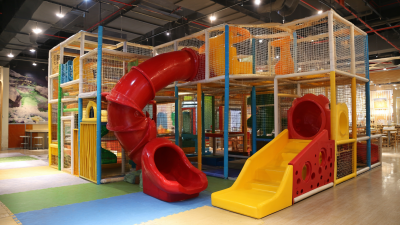
Inquiry
Form loading...
The significance of play in child development cannot be overstated, especially when facilitated through well-designed Commercial Playgrounds. According to the National Program for Playground Safety, approximately 3.5 million children are treated for injuries related to playground activities annually, highlighting the necessity of safe and engaging play environments. A report by the American Academy of Pediatrics emphasizes that children need access to diverse play opportunities to foster physical, social, and emotional growth. Commercial Playgrounds provide not only a safe space for active play but also promote community engagement, serving as vital hubs for social interaction among children and families. Studies indicate that such environments can significantly enhance children's motor skills, cognitive abilities, and social skills, contributing to their holistic development. In this exploration, we will delve deeper into the multifaceted benefits that Commercial Playgrounds bring to both child development and the broader community.

Commercial playgrounds offer numerous benefits that extend beyond mere recreation. These playgrounds are designed with essential features that facilitate various aspects of child development, including physical, social, and cognitive skills. For example, equipment that encourages climbing, swinging, and sliding helps improve motor skills and coordination. Moreover, well-designed play areas encourage imaginative play, allowing children to explore different roles and scenarios, which is crucial for emotional and social growth.
Tips: When choosing a commercial playground, look for features like inclusive designs that accommodate children of all abilities. Incorporating sensory play elements, such as textures and sounds, can significantly enhance sensory development and engagement. Additionally, ensure that the layout promotes social interaction; spaces for group play enable children to develop teamwork and communication skills.
Safety should also be a top priority. Ensure that the materials used are non-toxic and that the playground is equipped with proper safety surfacing to prevent injuries. Regular maintenance checks and adherence to safety standards are essential to create a secure environment for children to explore and grow. By prioritizing these essential features, commercial playgrounds can effectively contribute to holistic child development while fostering community engagement.
Outdoor play is essential for the social and emotional development of children. Research indicates that opportunities for cooperative play and engaging in symbolic activities on commercial playgrounds significantly enhance children's social skills. When children interact in these settings, they learn to negotiate, collaborate, and communicate effectively. Through shared experiences, such as playing games or exploring natural elements in their surroundings, they build interpersonal relationships that are crucial for their overall emotional well-being.
Moreover, the increasing trend of children not playing outdoors after school raises concerns about their physical and social health. Studies have shown that outdoor play positively influences not just physical health but also critical social abilities. Activities designed specifically to foster social skills in children, including group sports and structured play, cater to children's developmental needs, especially for those, like those with autism spectrum disorders, who may require targeted approaches for social interaction and motor skill enhancement. Thus, promoting the use of playgrounds and organized outdoor activities is vital for nurturing healthier, more socially capable children.
Creating inclusive play spaces is essential for fostering a sense of belonging among children with diverse needs. Commercial playgrounds that prioritize accessibility ensure that all children, regardless of physical or developmental challenges, can engage in play. Features such as wheelchair-accessible swings, sensory play panels, and tactile surfaces provide opportunities for children to explore and interact in a supportive environment. This inclusivity not only enhances individual development by promoting motor skills and social interactions but also teaches valuable lessons in empathy and cooperation among peers.

Moreover, inclusive playgrounds serve as vital community hubs where children of all abilities can come together. These spaces cultivate relationships among families and encourage social interaction among children who might otherwise feel isolated. Through shared play experiences, children learn to appreciate differences and build friendships, creating stronger, more cohesive communities. As children play side by side, they develop important life skills such as teamwork and communication, which are fundamental for their future interactions in society. Ultimately, the creation of inclusive play spaces not only benefits children with diverse needs but enriches the fabric of the entire community.
Community engagement is a pivotal aspect of developing commercial playgrounds that cater not only to children's developmental needs but also to the broader community. When local stakeholders—such as parents, educators, and local businesses—are involved in the planning and construction phases, the outcome is a playground that reflects the community’s values and requirements. According to a report from the National Recreation and Park Association (NRPA), neighborhoods with playgrounds that were developed through community input saw a 30% increase in usage rates compared to those built without such collaboration. This data highlights the importance of including voices from diverse community members to create inclusive spaces that encourage play.
Moreover, engaging local stakeholders fosters a sense of ownership and pride within the community, leading to better maintenance and longevity of playgrounds. A study from the American Academy of Pediatrics notes that community collaboration in playground creation significantly enhances the safety and design of play areas, as input from parents and children ensures that the installations are not only enjoyable but also cater to the unique needs of local families. This cooperative approach not only bolsters child development by providing rich and varied play experiences but also strengthens the community fabric, promoting social interactions and cohesion among residents.

The promotion of safe and effective use of commercial playgrounds is crucial for ensuring a positive impact on child development and community engagement. Recent initiatives, such as the new Playground Strategy for Westmorland and Furness, exemplify efforts to deliver consistently high-quality play provisions. This strategy aims to create inclusive and engaging spaces, ensuring that all children, regardless of their background or ability, can access and enjoy playground facilities. By adopting designs that cater to a diverse range of needs, communities foster environments that not only encourage physical activity but also nurture social interactions among children and families.
Moreover, legislation like Ontario's recent efforts to enhance public safety in parks further supports the effective use of playgrounds. By providing municipalities and police with better tools, the government can help ensure that these play areas remain safe and welcoming for all. Strategies that combine community engagement with safety measures, such as regular maintenance and supervision, are essential for building trust and encouraging families to utilize these spaces. This holistic approach ultimately enhances the role of commercial playgrounds as vital community hubs that promote healthy development and foster connections among residents.






